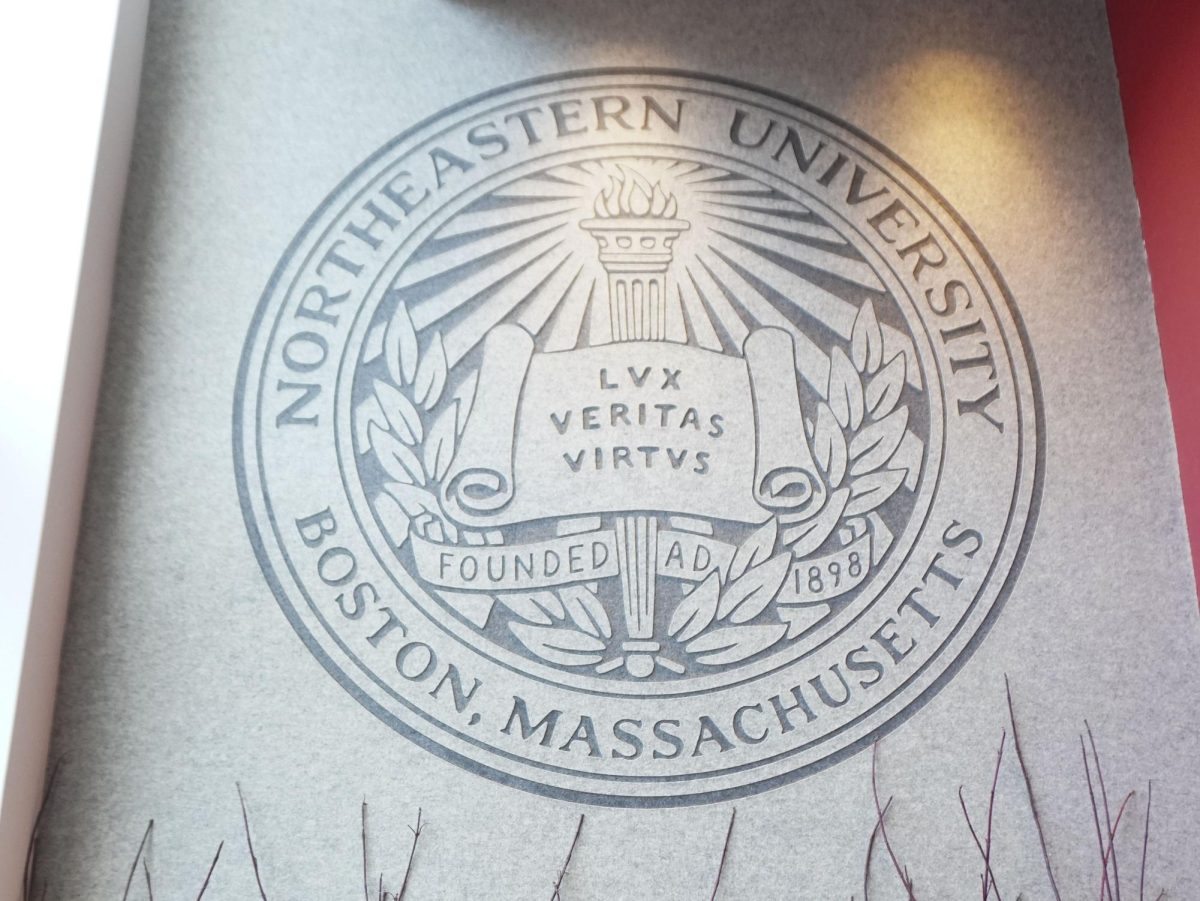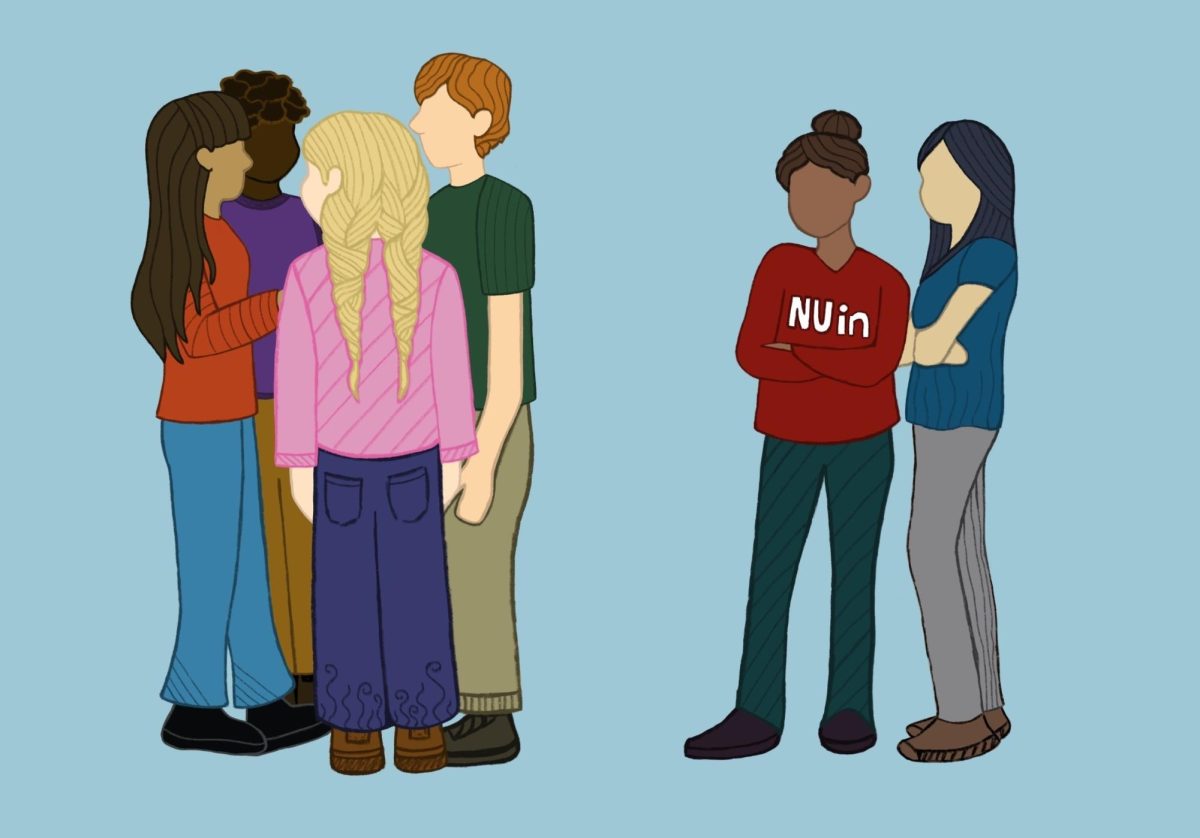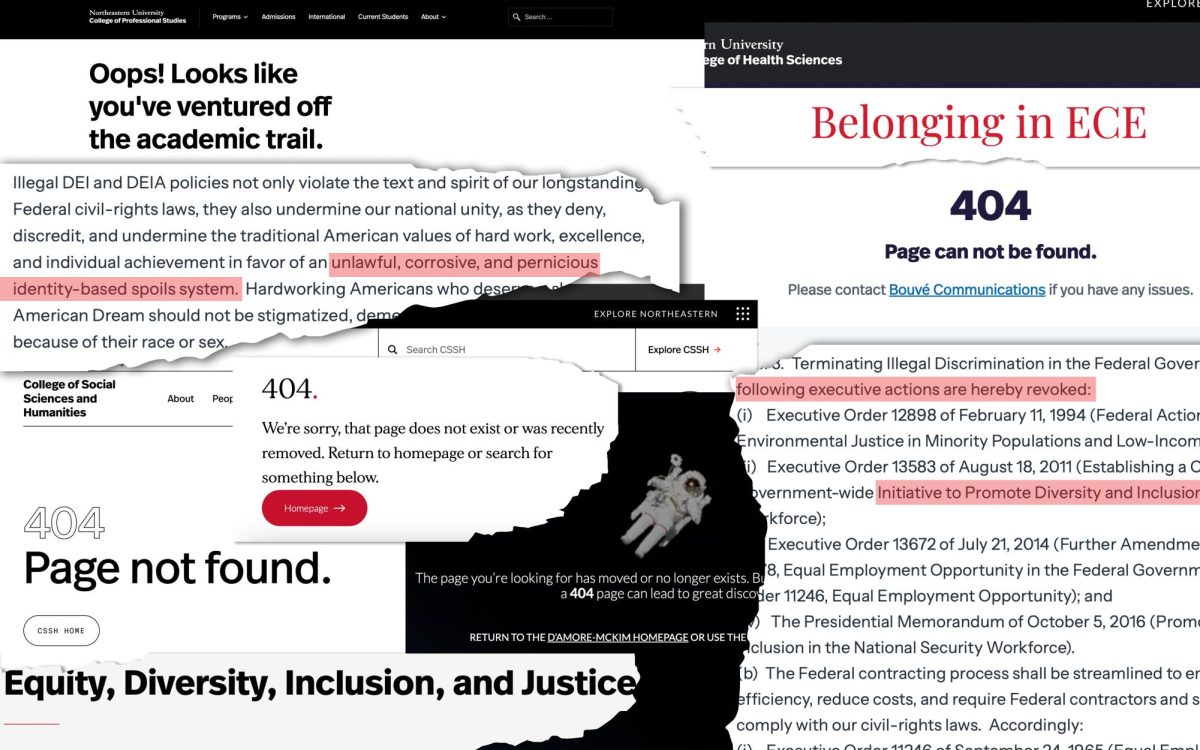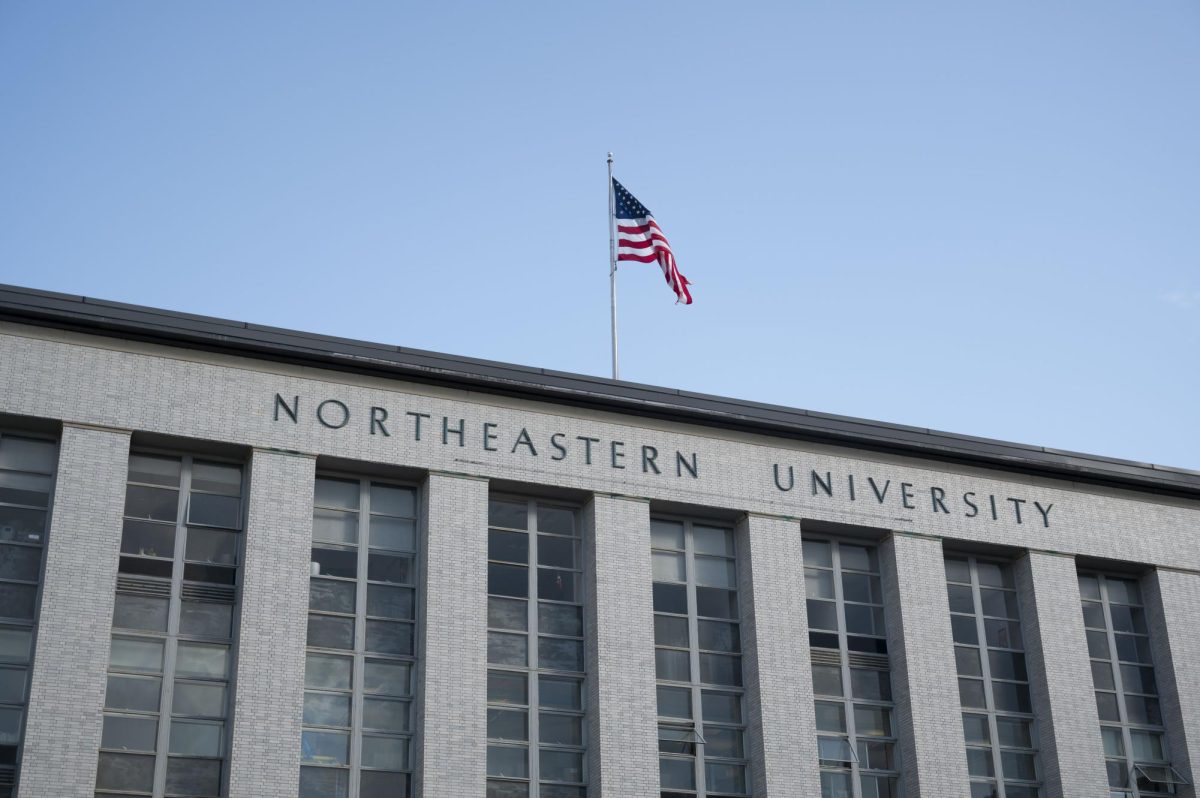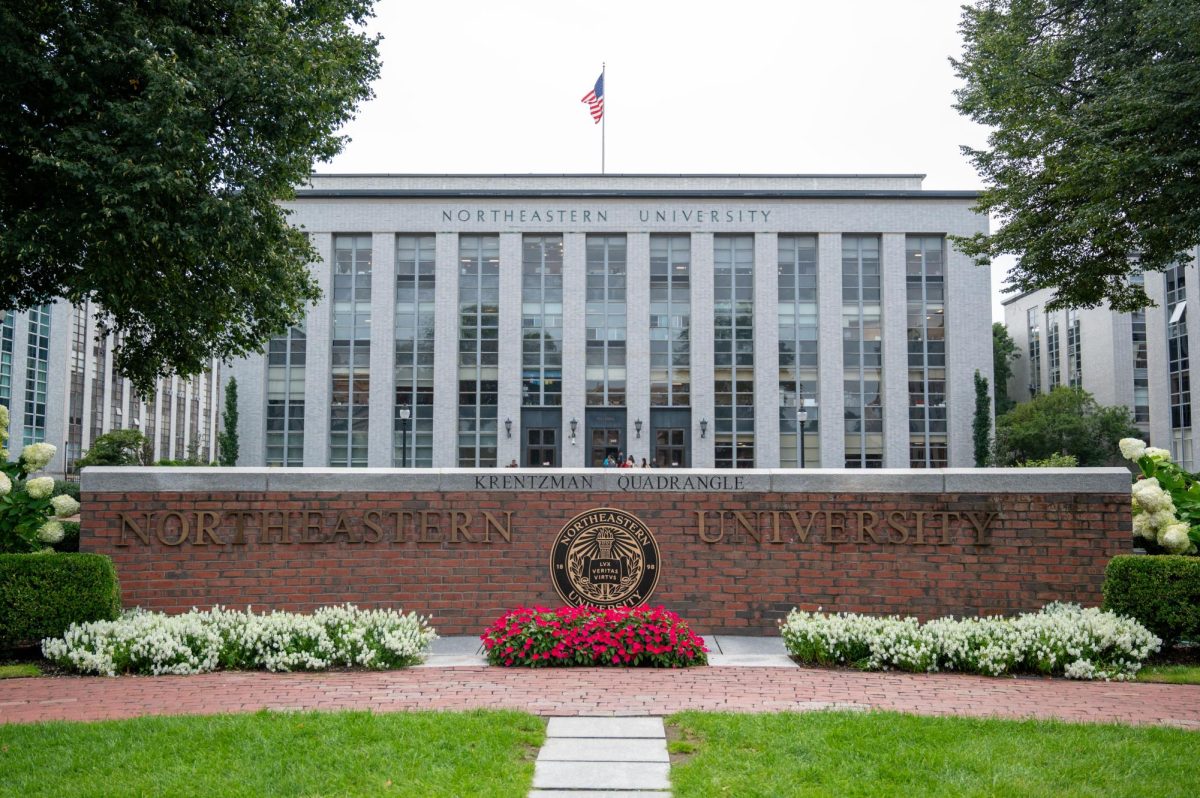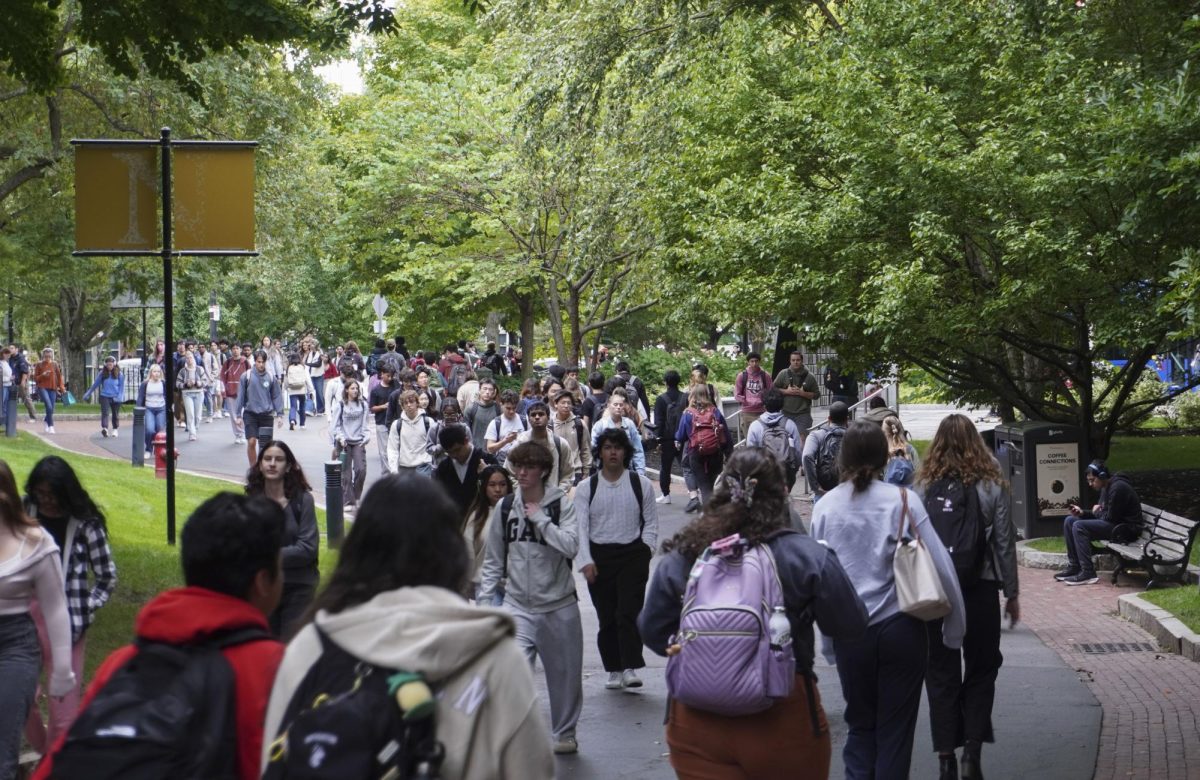The scene was familiar to some of the 70 students and faculty members at the Raytheon Amphitheater Thursday: a young man is strapped to a chair with his eyes pried open by fork-like tools. Doctors are forcing him to watch ghastly films of rape and murder – “ultraviolence,” as he would say.
“Maybe you’ve seen this movie before,” said Hilary Poriss, a music professor, before she pressed play.
The movie was Stanley Kubrick’s iconic “A Clockwork Orange,” and the scene, in which doctors program the antagonist to be repulsed by his favorite music, set the stage for last week’s “Music and Torture.”
The panel was presented by Northeastern’s chapter of the Music and Entertainment Industry Student Association (MEISA) to discuss the use of popular music in interrogation of suspected terrorists.
“What’s at stake,” Poriss asked, “when … aesthetic objects are transformed into, and implemented as, objects of torture?”
The technique may sound innocuous, yet Casey Gruttadauria, the senior music industry major who led the panel, said subjects are locked in small cells, held in stress positions and blasted with extreme air conditioning and irregular strobe lights. Then, the music starts, blaring into their ears at levels that can cause permanent damage.
Gruttadauria was joined by freelance writer David Peisner, who wrote an article on pop interrogation for Spin magazine two years ago, and attorney Stephen Oleskey, who is representing six men held without charge at Guantanamo Bay, a US military prison where suspected terrorists are questioned.
Students asked questions, and the three panelists discussed the history of music and war; what it means when aesthetic objects are used as torture devices; and how serious the technique is.
In his article “War Is Loud,” Peisner explored the use of music by bands like Rage Against the Machine, Drowning Pool and Eminem to interrogate detainees at Guantanamo, and also fed the fire of a controversial discussion: Can the use of loud music be considered torture?
“You have to talk about it in the totality of what’s happening,” he said. “You have devout Muslims … for whom just listening to music is a violation of beliefs. They’re put in solitary confinement, in stress positions. The detainees that I spoke to said it was usually the same song looped over and over. By itself – if it were you or me – it’s going to be annoying. But in that context, it’s beyond that.”
Although Oleskey and Peisner said they believe the technique is perverse, both said the legal lines are hard to draw – or even conceptualize – because interrogation is done behind closed doors and is not well documented.
War has always been loud, Peisner said – just not this loud.
“There are some precedents of using music [in war], but, in terms of interrogation, music is a relatively recent adaptation,” said Peisner, who cited examples of troops in Vietnam using white noise against their enemies, and the famous 1989 capture of Manuel Antonio Noriega, a former military dictator of Panama, during which the song “Panama” by Van Halen was played repeatedly.
But the first documented case of music used explicitly by the US government for interrogation, Peisner said, was in 2002, when a September 11 suspect was held by the CIA in a remote location in Thailand. He was blasted with music by the Red Hot Chili Peppers, Peisner said.
“It’s easier to justify this stuff, because it generally doesn’t leave physical marks,” Peisner said. “It doesn’t involve pulling out people’s fingernails. What’s interesting though – I’ve read that physical torture, you can either take it or you can’t. Whereas, with all these mental things – music, sleep deprivation – no matter what, it wears you down.”
Peisner added that the comical aspect of “music as torture” leads some to believe it’s not harmful. When it first made headlines, he said, it was because Barney songs were being used on the suspects.
“It may be intentionally whimsical,” he said. “The government knows, if this stuff comes out, people will just go, ‘Come on.'”
But others, like guitarist Tom Morello, from Rage Against the Machine, have been outraged, Peisner said, by the method itself, and the lightheartedness with which the media has handled it.
For Oleskey, the use of music as a torture tool is a symptom of something greater: the Bush administration’s extreme methods of hunting down anyone anywhere and putting them in Guantanamo with no real legal recourse.
“We’ve declared open season on anyone in the world,” he said. “They are doing this, and they are doing this in your name. Is this how you want to be protected?”
Though Oleskey’s clients at Guantanamo haven’t been subjected to music as a means of interrogation, he said he hopes and believes it will be completely fazed out as other extreme methods like water-boarding are brought into public light and discussed in coming weeks.
“Legally speaking, music isn’t any more egregious [than other forms of torture],”Oleskey said. “I think what gets me is [that] music is something we’ve created to bring enjoyment. It’s offensive to use it as a technique of torture.”



